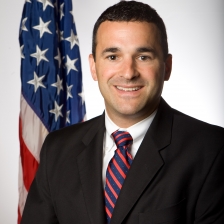
As it noted in a White House blog posting by Office of Management and Budget (OMB) Controller Danny Werfel Thursday, the Obama Administration has made disposing of unneeded properties and making more efficient use of the government’s real estate assets a priority for federal agencies. As the next step in this effort, Werfel has issued a management procedures memorandum that directs all Executive Branch departments and agencies to implement a “Freeze the Footprint” policy for federal real estate.
That guidance (also issued yesterday) clarifies the Administration’s policies as announced in the “Real Property” section of OMB Memorandum M-12-12 last May, which stated that agencies must “not increase the size of their civilian real estate inventory,” subject to certain exceptions, and required any agency that increases its square footage to offset any new space through “consolidation, co-location, or disposal of space from the inventory of that agency.”
The new guidance requires all agencies to develop plans that will serve as the basis for action to restrict the growth in their real property inventories, noting that an “agency’s total square footage for office and warehouse space shall remain at its FY 2012 baseline level” and specifying how that baseline is to be calculated. It also requires agencies to develop internal controls related to square footage growth, to facilitate increased communication between their chief financial officer and real property management offices, and to work collaboratively with other agencies and with GSA “to find opportunities for smarter space usage through co-locations and consolidations.” All of these requirements are designed to improve management of the federal government’s real property assets.
Specifically, each agency must develop and submit to GSA a three-year Revised Real Property Cost Savings and Innovation Plan by May 15, 2013, and every third year thereafter. According to yesterday’s memorandum, “This plan will be a revision of each agency’s 2010 Real Property Cost Savings and Innovation Plan with a narrower focus, and prospective analysis of real property spending for the next three fiscal years…” The plan must contain the following elements:
- A plan to maintain the agency’s FY 2012 footprint;
- Documentation of leasing costs, including the total dollar amount the agency spends on federal and private sector leases and an analysis of how it plans to control leasing and other space costs in the future;
- An “explanation of efficiency” that specifies actions the agency is taking to improve how efficiently it uses its space; and
- A “description of internal controls”—the methods and procedures that the agency is using to comply with the “Freeze the Footprint” policy.
The memorandum also calls on GSA and OMB to begin taking additional actions to improve the consistency and accuracy of information used to measure agency performance. And it directs OMB to review agency compliance with the “Freeze the Footprint” policy on an annual basis and to make that information—including each agency’s square footage baseline and annual progress—available to the public on Performance.gov.
What does it mean?
What does it mean for lessors? Well, for starters, “freezing the footprint” means exactly that. Though there are policy exceptions, we can expect the inexorable growth of GSA’s space inventory to be substantially abated. Theoretically we should see GSA’s inventory get smaller but in reality it will probably continue to grow. However, the reason is not because of net demand growth but rather because various agencies that had previously leased space under their own delegated or independent authority are rolling their leases into GSA’s inventory upon their expiration. One notable example of this is the SEC, which lost its leasing authority last year. That agency has about 2.5 million square feet of leases in locations across the United States. All of this will migrate to GSA control.
Freezing the Footprint will also force agencies to confront some difficult budget decisions. Downsizing is difficult to do, especially when the purpose of it is to accommodate the same number of people in less space. That often requires a complete re-configuration of the premises, which is difficult to do in-place. The alternative, of course, is to move to another building–tabula rasa–but that can be pricey for different reasons. It also assumes suitable alternative buildings are available.
Or, agencies can simply increase the number of people who telework. Now the agency can shrink its space (maybe by purging a few leases) and allow more people to work from home. For agencies this approach has been popular because it has the advantage of easily meeting space utilization goals and (by the metrics that the government tracks) it reduces real estate costs substantially. Further, the path for this has been cleared by the Telework Enhancement Act of 2010, which requires that the federal government provide teleworking opportunities to a substantial portion of its employees. A GAO report issued last year concluded that nearly 169,000 federal employees were teleworking at least one day a week. Based upon our anecdotal observation, we are certain that number has continued to grow.
Expect to see federal inventory growth slow substantially and also expect federal civilian employment to flatten and possibly decline, returning to levels seen during the Clinton and G.W. Bush Administrations.
